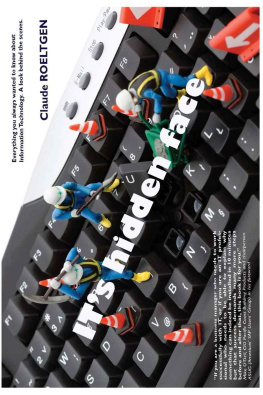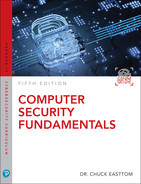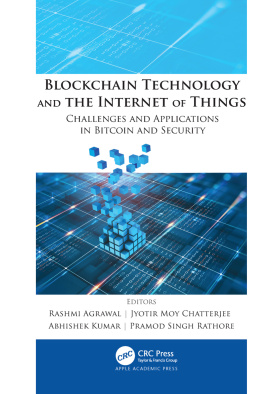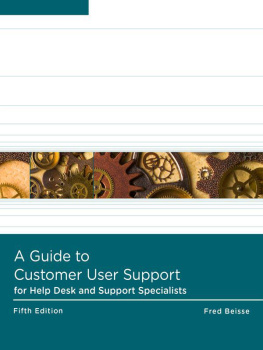Imagine if, every Thursday, your shoes exploded if you tied them the usual way.This happens to us all the time with computers, and nobody thinks of complaining.
Jef Raskin
Copyright 2009 Claude Roeltgen. All rights reserved.
ISBN 144-215-231-1
EAN-13 9781442152311
Claude Roeltgen
Everything you always wanted to know about
Information Technology.
A look behind the scenes.

Table of contents
Dr. Andreas Resch
Managing Partner Modalis (Germany)
Former CIO Bayer AG Member of US CIO Hall of Fame (2008)
Foreword by Dr. Andreas Resch
Where can you experience something like this? On the one hand, having an enormous impact on almost all areas of daily life, a strong pervasion of free time and the joband on the other hand, fundamental misunderstandings about interdependencies, totally contradicting expectations and many misapprehensions. Information Technology offers this every day, again and again. The big things are present everywherein aerospace and navigation, at wars, and in hospital operating theatres. But its also indispensable with the small thingsmusic, TV, telephones, storing appointments, and writing letters. And at the same time, full of surprises, unexpected events, difficulties to evaluate costs, and timeframes.
When engineers began to build machines that were designed to abate the work from our brains, they bequeathed a special challenge to us: do we sufficiently understand the technology that processes the information, the material of understanding? As far as machines have taken over the movement of arms and legs, we could get an intuitive understanding of interdependencies. Of course, there remains a certain astonishment as to why heavy planes can remain in the air, but the basics of lift and the effect of engines are understandable. We basically understand motors, saws, and power stations. With IT, this is all still somewhat different. There, the predictable computer creates a quintessentially unpredictable world.
Books which contribute to a better understanding of IT should, in fact, be available en masse. Im not talking about user guides that help reduce the number of application errors. Im talking about the effort to develop a public understanding for the interdependencies in the background. At the very least, we should cultivate a rudimentary reliable intuition to support what IT can deliver, what preconditions must be fulfilled, and how a thing roughly works. But there is hardly any reading material about technologys inner life, from the engine room of IT, this foreign yet so proximal world.
This is what makes this book so precious. It elucidates many of the reasons why things are not as they were expected, why things still dont work the way they were announced. But it also explains how it can be better understood and, therefore, be better managed. The book builds bridges; it connects worlds and, therefore, prevents small incidents at the frontier between technology and applications, as well as hard confrontations between huge expectations and complex projects.
In other industrial sectors, the maturity level of technology and the penetration of application areas were linked closely together. The generator has made its way into every bicycle as a dynamo at the moment when technology was mature and didnt have any major surprises. Cars and washing machines have spread over the globe in the same way as their technology became mature and manageable. To some respect, this has happened differently in IT. Information Technology is, at the same time, a very young industry with permanently changing standards, unexpected innovation, and surprising mistakes. At the same time, it has already diversified very strongly and has nested in the most diverse areas of life. It is very immature and, at the same time, very widespread. A problematic mix.
Claude Roeltgen has made an important contribution about how the disparities can be managed better. The one who has read his book will be wondering much less, will understand more and judge better, will be better prepared, and will be able to react in a wiser way. The one who has read his book will be less a fascinated victim of technology and more an up-to-date epicure of technology, which is supposed to be a favor to our brains.
Mike ODell
CIO at Pacific Coast Building Products
www.paccoast.com
Chairperson ASUG (Americas' SAP Users' Group)
Foreword by Mike ODell
As a CIO (Chief Information Officer) with years of experience as a business manager, Im in the unique position to personally understand the vicious cycle caused by technology and the business not understanding each other. Claude Roeltgen tells us why we find ourselves in this cycle, and notes that the stakes are highIT projects can often be over budget or time, and/or havent solved the actual problems they were trying to address.
When I was a plant engineer, and later an operational manager, I experienced the frustration of technology being implemented for technologys sake. Technologists didnt understand the negative impact their decisions were having on the business. Conversely, some on the business side didnt understand how one little change requested by the business could affect the entire IT ecosystem.
While its generally accepted that IT professionals need to understand the business theyre serving, Claude Roeltgen tells us that, in order to together create relevant solutions, its now time for the reverse to be true.
To end the cycle of business demanding too much too soon, which results in poor-quality IT solutions and/or failed projects that cost too much and take too long, IT needs to learn to educate the business about whats truly involved in any IT solution. Too often, the businesss expectations have been set by plug-n-play product marketing, while the reality of implementation, maintenance and support processes tell a different story.
Conversely, IT departments by and large are interested in technology, not business. But at Pacific Coast Building Products (PCBP), our number one rule in IT is Never forget; we are in the Building Materials Business. We use technology as a tool to help the business. We never use it just because we can. And while educating business people about IT is a worthy goal, weve gone even further by pulling business people into IT roles.
As Claude tells us, because life in an IT department is about solving problems quickly, communication and quality often suffer. At PCBP, we follow his advice by concentrating on the communication piece. For instance, rather than working with the business, then going away to solve the problem in isolation, only to discover three months later that the implemented solution isnt what the business wanted, we shorten the cycle and bridge communication by: working with the business, creating a rough working model, then gathering feedback from the business in this early stage.
This communication process breaks the problem down into nibbles. As Claude postulates, fixing the communication can assuage the quality and time issues. Because over time, the new cycle of learning about each other becomes pervasive, shortening future project times.
Next page










